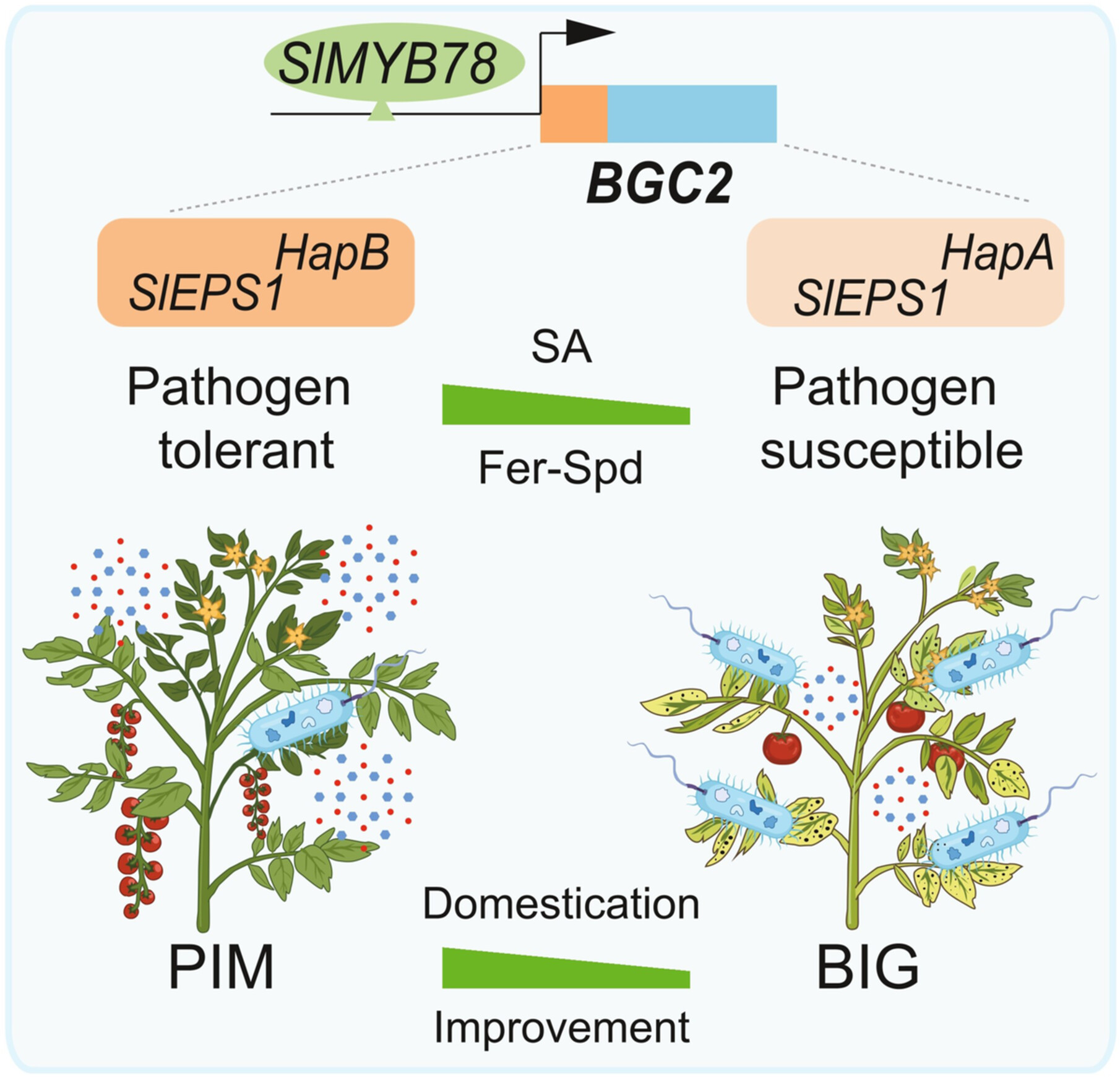A SlMYB78-regulated bifunctional gene cluster for phenolamide and salicylic acid biosynthesis during tomato domestication, reducing disease resistance
- 1. National Key Laboratory for Tropical Crop Breeding, School of Breeding and Multiplication (Sanya Institute of Breeding and Multiplication), Hainan University, Sanya 572025, China
2. National Key Laboratory for Tropical Crop Breeding, College of Tropical Agriculture and Forestry, Hainan University, Sanya 572025, China
3. Yazhouwan National Laboratory, Sanya 572025, China
†These authors contributed equally to this work.
*Correspondences: Jun Yang (yang9yj@hainanu.edu.cn); Shouchuang Wang (shouchuang.wang@hainanu.edu.cn, Dr. Wang is fully responsible for the distribution of all materials associated with this article)
Received date: 2024-11-13
Accepted date: 2025-02-27
Online published: 2025-03-28
Supported by
This work was financially supported by grants from the National Key Research and Development Program of China (2022YFF1001900), the Hainan Province Science and Technology Special Fund (No. ZDYF2022XDNY144), the Hainan Provincial Academician Innovation Platform Project (No. HDYSZX‐202004), the Hainan University Startup Fund (No. KYQD (ZR) 21025), the Collaborative Innovation Center of Nanfan and High‐Efficiency Tropical Agriculture, Hainan University (No. XTCX2022NYB06).
Abstract

Key words: bifunctional; disease resistance; domestication; gene cluster; phenolamide; salicylic acid; SlMYB78
Cite this article
Peng Cao, Linghao Xia, Xianggui Li, Meng Deng, Zhonghui Zhang, Xiangyu Lin, Zeyong Wu, Yingchen Hao, Penghui Liu, Chao Wang, Chun Li, Jie Yang, Jun Lai, Jun Yang, Shouchuang Wang . A SlMYB78-regulated bifunctional gene cluster for phenolamide and salicylic acid biosynthesis during tomato domestication, reducing disease resistance[J]. Journal of Integrative Plant Biology, 0 : 1 . DOI: 10.1111/jipb.13899